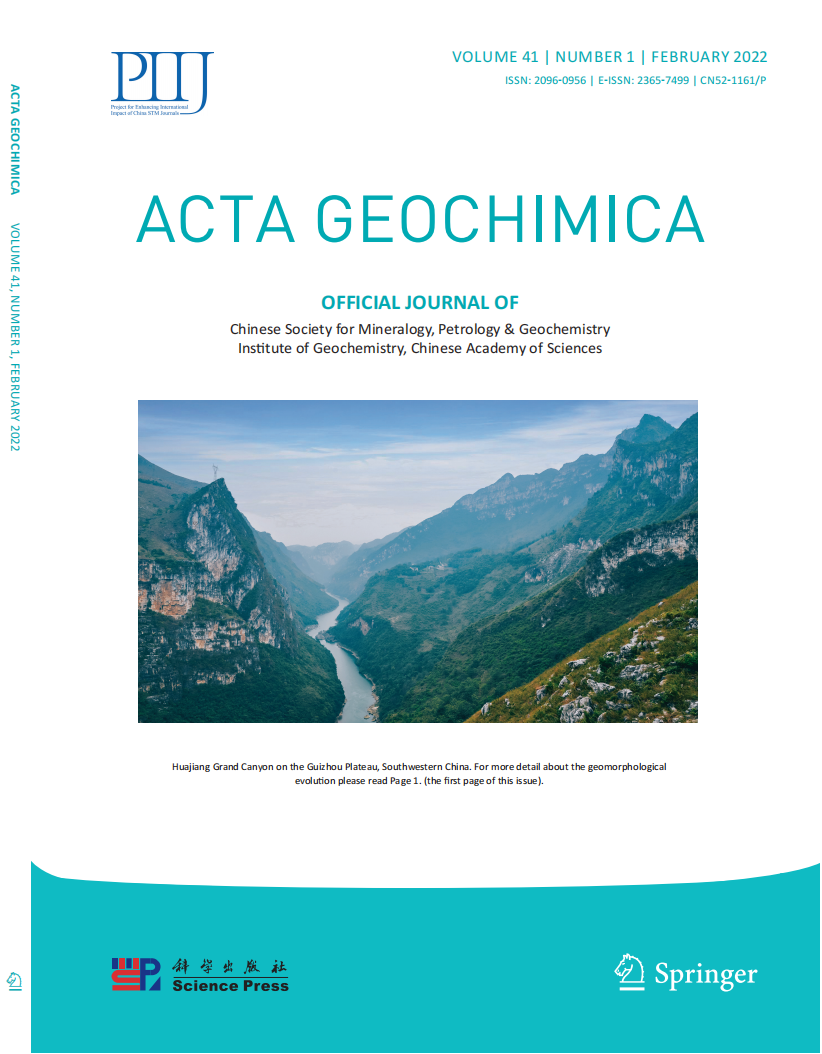- 钛学术文献服务平台 \
- 学术期刊 \
- 基础科学期刊 \
- 化学期刊 \
- 地球化学学报(英文)期刊 \
Hydrogeochemical evaluation and statistical analysis of groundwater of Sylhet, north-eastern Banglad
Hydrogeochemical evaluation and statistical analysis of groundwater of Sylhet, north-eastern Banglad
原文服务方:
地球化学学报(英文)
摘要:
To investigate the hydrogeochemical characteristics of groundwater 23 shallow, 30 intermediate and 38 deep wells samples were collected from Sylhet district of Bangladesh, and analyzed for temperature, pH, Eh, EC, DO, DOC, Na+, K+, Ca2+, Mg2+, Cl-, SO42-, NO3-, HCO3-, SiO2-, Fe, Mn and As. Besides, 12 surface water samples from Surma and Kushiyara Rivers were also collected and analyzed to understand the influence into aquifers. Results revealed that, most of the groundwater samples are acidic in nature, and Na–HCO3 is the dominant groundwater type. The mean value of temperature, EC, Na+, K+, Ca2+, Mg2+, Cl-, NO3- and SO42- were found within the range of permissible limits, while most of the samples exceeds the allowable limits of Fe, Mn and As concentrations. However, relatively higher concentration of Fe and Mn were found in deep water samples and reverse trend was found in case of As. The mean concentrations of As in shallow, intermediate and deep wells were 39.3, 25.3 and 21.4μg/L respectively, which varied from 0.03 to 148 μg/L. From spatial distribution, it was found that Fe, Mn and As concentrations are high but patchy in northern, north-western, and south-western part of Sylhet region. The most influential geochemical process in study area were identified as silicate weathering, characterized by active cation exchange process and carbonate weathering, which thereby can enhance the elemental concentrations in groundwater. Pearson's correlation matrix, principal component analysis and cluster analysis were also employed to evaluate the controlling factors, and it was found that, both natural and anthropogenic sources were influencing the groundwater chemistry of the aquifers. However, surface water has no significant role to contaminate the aquifers, rather geogenic factors affecting the trace elemental contamination. Thus it is expected that, outcomes of this study will provide useful insights for future groundwater monitoring and management

推荐文章
Evaluation of groundwater quality in the Dibdibba aquifer using hydrogeochemical and isotope techniq
Safwan-Zubair
Dibdibba formation
Geochemical modeling
Mixing
Stable isotopes
Basra
Hydrogeochemical processes and multivariate analysis for groundwater quality in the arid Maadher reg
Groundwater quality
Hydrogeochemical processes
Multivariate analysis
Salinity
Mio-Plio
Quaternary aquifer
A study of groundwater irrigation water quality in south-central Bangladesh: a geo-statistical model
Semivariogram
Ordinary kriging model
Salinity
Irrigation water quality index
GIS
Hydrochemistry
Distribution and assessment of hydrogeochemical processes of F-rich groundwater using PCA model: a c
Fluoride
Groundwater chemistry
PCA model
Hydrogeochemical processes
Yuncheng Basin
内容分析
关键词云
关键词热度
相关文献总数
(/次)
(/年)
文献信息
| 篇名 | Hydrogeochemical evaluation and statistical analysis of groundwater of Sylhet, north-eastern Banglad | ||
| 来源期刊 | 地球化学学报(英文) | 学科 | |
| 关键词 | Arsenic Groundwater Hydrogeochemistry Multivariate statistics Spatial distribution | ||
| 年,卷(期) | 2019,(3) | 所属期刊栏目 | |
| 研究方向 | 页码范围 | 440-455 | |
| 页数 | 15页 | 分类号 | |
| 字数 | 语种 | 英文 | |
| DOI | 10.1007/s11631-018-0303-6 | ||
五维指标
版权信息
全文
- 全文.pdf
引文网络
引文网络
二级参考文献 (0)
共引文献 (0)
参考文献 (0)
节点文献
引证文献 (0)
同被引文献 (0)
二级引证文献 (0)
2022(0)
- 参考文献(0)
- 二级参考文献(0)
- 引证文献(0)
- 二级引证文献(0)
研究主题发展历程
节点文献
Arsenic
Groundwater
Hydrogeochemistry
Multivariate statistics
Spatial distribution
研究起点
研究来源
研究分支
研究去脉
引文网络交叉学科
相关学者/机构
期刊影响力
地球化学学报(英文)
主办单位:
中国科学院地球化学研究所
出版周期:
双月刊
ISSN:
2096-0956
CN:
52-1161/P
开本:
大16开
出版地:
贵州省贵阳市观水路46号地球化学研究所
邮发代号:
创刊时间:
1982-01-03
语种:
英文
出版文献量(篇)
294
总下载数(次)
0
期刊文献
相关文献
推荐文献

 免费查重
免费查重










